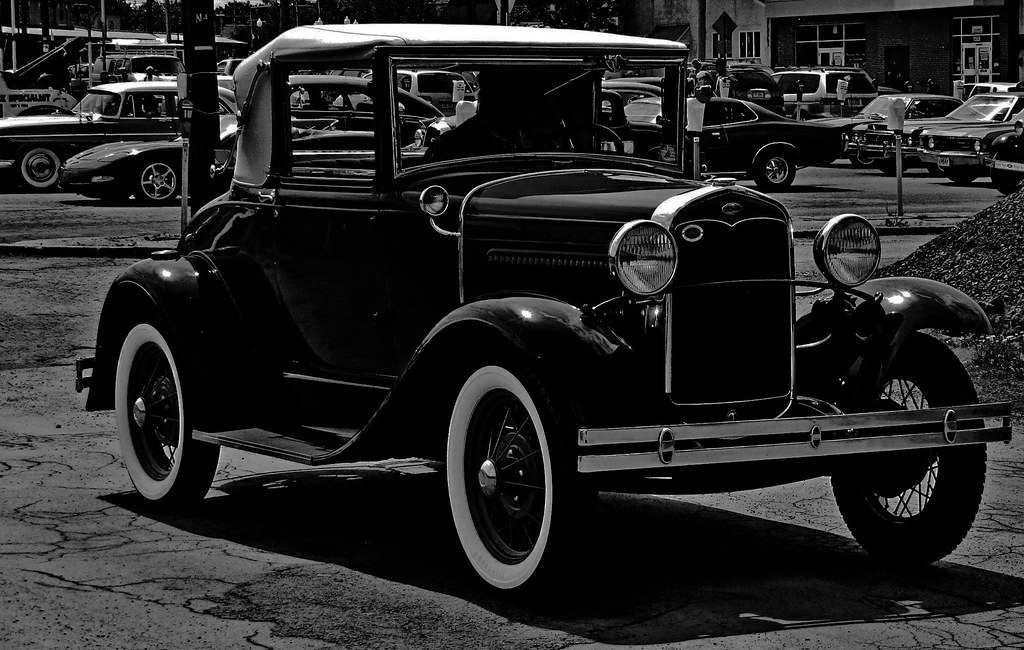
The automotive industry is a fascinating realm where innovation often clashes with expectation. Every year, new models are unveiled with considerable fanfare, promising revolutionary features, unparalleled performance, or groundbreaking efficiency. These vehicles capture the public’s imagination, fueled by extensive marketing campaigns and glowing pre-release reviews that build a sense of anticipation among consumers.
However, the journey from concept to consumer often reveals a stark reality: not every vehicle lives up to its initial hype. The allure of advanced technology or a prestigious badge can quickly fade when confronted with real-world driving conditions, reliability issues, or performance that simply doesn’t match the promise. This disconnect between expectation and delivery is a critical lesson for both manufacturers and prospective buyers.
This article delves into some of the most prominent examples of cars that generated significant buzz but ultimately failed to impress once they hit the roads. We will analyze the specific shortcomings that led to their downfall, exploring how design flaws, mechanical issues, and misjudged market positioning transformed anticipated successes into notable disappointments, offering valuable insights for anyone navigating the complex world of automotive purchasing.

1. **Tesla Model X**
When the Tesla Model X first arrived, it promised to be a game-changer, poised to revolutionize the SUV market with its unique blend of electric power and futuristic features. The electric SUV segment was still nascent, and Tesla’s reputation for innovation created immense anticipation for a vehicle that appeared to push the boundaries of automotive design and functionality. Its distinctive falcon-wing doors, in particular, became a symbol of its avant-garde approach, designed to offer unparalleled access to the rear seats.
Despite this initial enthusiasm, the Model X quickly faced significant hurdles, primarily centered around its build quality and reliability. According to J.D. Power, the Model X has consistently ranked below average in reliability. This finding pointed to widespread issues that dampened the owner experience, overshadowing the vehicle’s innovative design and impressive acceleration capabilities.
A key source of these reliability concerns stemmed directly from its most iconic feature: the falcon-wing doors. Owners reported frequent issues that overshadowed the car’s innovative design, ranging from sensors malfunctioning to doors failing to open or close properly. Coupled with problems with its touchscreen system, these persistent flaws created a frustrating ownership experience that contradicted the premium image Tesla aimed to project, illustrating how ambitious features can sometimes become a detriment rather than a differentiator.
Car Model Information: 2021 Subaru Forester Limited
Name: Tesla Model X
Manufacturer: Tesla, Inc.
Production: 2015–present
Assembly: unbulleted list
Designer: Franz von Holzhausen
Class: Crossover (automobile)
BodyStyle: 5-door SUV
Layout: unbulleted list
Doors: unbulleted list
Related: Tesla Model S
Motor: unbulleted list
Title: Discontinued
Transmission: unbulleted list
Battery: unbulleted list
ElectricRange: FTP-75
Wheelbase: cvt
Length: cvt
Width: cvt
Height: cvt
Weight: unbulleted list
Sp: us
Categories: 2020s cars, All Wikipedia articles in need of updating, All Wikipedia articles written in American English, All articles containing potentially dated statements, All articles lacking reliable references
Summary: The Tesla Model X is a battery electric mid-size luxury crossover SUV built by Tesla, Inc. since 2015. Developed from the full-sized sedan platform of the Tesla Model S, the vehicle uses distinctive falcon wing doors for rear passenger access.
The Model X has an EPA size class as an SUV, and shares around 30 percent of its content with the Model S, half of the originally planned 60 percent, and weighs about 10 percent more. Both the Model X and Model S are produced at the Tesla Factory in Fremont, California. The prototype was unveiled at Tesla’s design studios in Hawthorne, California, on February 9, 2012. First deliveries of the Model X began in September 2015. After one full year on the market, in 2016, the Model X ranked seventh among the world’s best-selling plug-in cars. A refresh of the Tesla Model X was introduced in 2021, offering a new “Plaid” performance model, along with a revised interior, powertrain, and suspension.Another update of the Model X was introduced in June 2025 with a new front bumper camera, new wheel designs, increased third-row space, dynamic ambient lighting, and adaptive headlights. The updates are similar to the Model S, which was updated at the same time.
As of July 2025, the Model X is available as a Long-Range version with an estimated EPA range of 352 miles (566 km) and a high performance “Plaid” version with an estimated EPA range of 335 miles (539 km).
Get more information about: Tesla Model X
Buying a high-performing used car >>>
Brand: Tesla Model: Model X
Price: $22,899 Mileage: 73,544 mi.
Read more about: Beyond the Badge: Uncovering the Hidden Flaws in 14 Fan-Favorite Vehicle Models
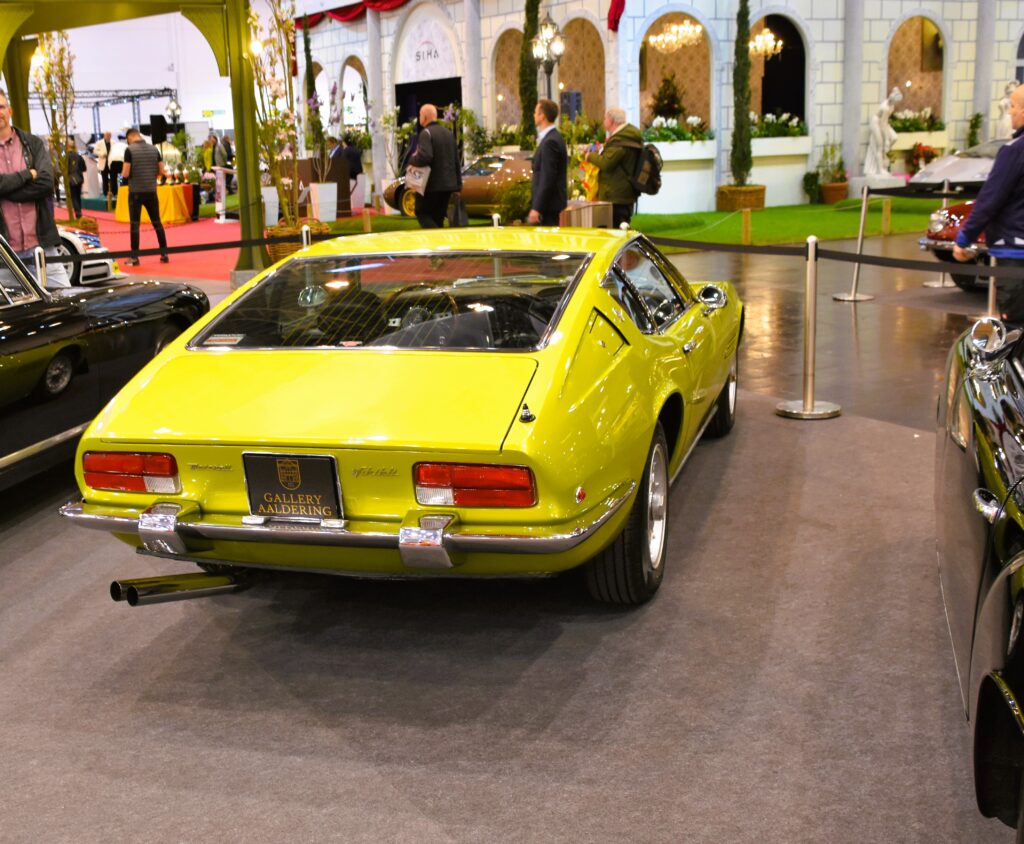
2. **Maserati Ghibli**
The Maserati Ghibli was introduced with a compelling proposition: an “affordable” entry point into the storied Italian luxury brand. The intention was to broaden Maserati’s appeal, offering a taste of exotic Italian motoring without the prohibitive price tag typically associated with its high-performance models. This strategy aimed to capture a new demographic of buyers aspiring to own a prestigious European sedan.
However, the Ghibli soon garnered criticism for failing to deliver on the fundamental expectations of its price point. It’s been criticized for lacking the performance and luxury expected at its price point. The driving dynamics often felt less engaging than its German rivals, and interior materials, while good, did not always convey the bespoke craftsmanship synonymous with Maserati.
Further compounding its challenges, reliability issues have plagued this model. According to Consumer Reports, Ghibli’s dependability is far below average. This assessment revealed that beneath the stylish Italian exterior, many owners found the car’s quality disappointing, which undermined the car’s perceived value and diluted the premium ownership experience Maserati sought to provide, leading to disappointment despite its attractive initial price.
Car Model Information: 2018 Maserati Ghibli Base
Name: Maserati Ghibli
Caption: 2018 Maserati Ghibli GranLusso
Manufacturer: Maserati
Assembly: Modena,Grugliasco,Turin
Class: Grand tourer,Executive car
BodyStyle: fastback,coupé,Roadster (automobile),Sedan (automobile)
Production: AM115: 1967–1973,AM336: 1992–1998,M157: 2013–2023
Categories: 1970s cars, 1990s cars, 2010s cars, Articles with short description, CS1 Italian-language sources (it)
Summary: Maserati Ghibli is the name of three different cars produced by Italian automobile manufacturer Maserati: the AM115, a V8 grand tourer from 1967 to 1973; the AM336, a V6 twin-turbocharged coupé from 1992 to 1998; and the M157, an executive saloon from 2013 to 2023.
Ghibli is the Libyan Arabic name for the hot dry south-westerly wind of the Libyan desert.
Get more information about: Maserati Ghibli
Buying a high-performing used car >>>
Brand: Maserati Model: Ghibli
Price: $14,980 Mileage: 66,162 mi.
Read more about: Navigating the Depreciation Minefield: The Fastest Depreciating Cars of 2025 and What It Means for Your Wallet
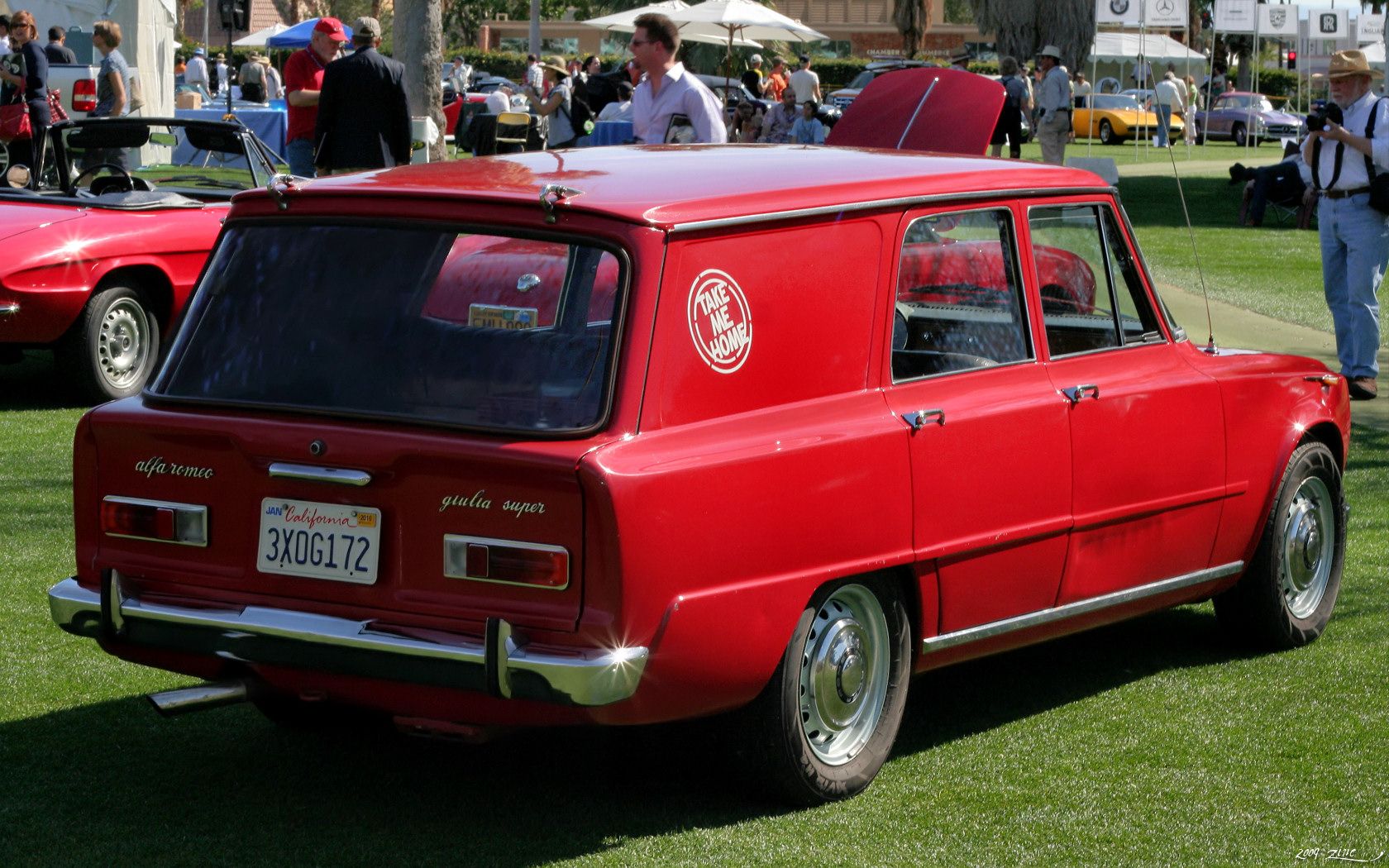
3. **Alfa Romeo Giulia**
The Alfa Romeo Giulia arrived with considerable fanfare, positioned as a vehicle that would spearhead the revival of the brand’s reputation in the luxury sedan market. With its stunning Italian design, promised agile handling, and powerful engine options, enthusiasts and critics alike had high hopes that the Giulia would re-establish Alfa Romeo as a serious contender against established European marques known for their performance and sophistication.
Yet, despite its sleek looks and driving dynamics, the Giulia’s journey was marred by frequent mechanical failures that significantly hurt its image. J.D. Power ranked the Giulia low in reliability, signaling widespread issues that new owners faced. These reports painted a picture of a vehicle that, while thrilling to drive, struggled with consistent operational integrity, which is a crucial factor for luxury car buyers.
Owners have reported persistent electrical and transmission issues. These persistent issues, often leading to unplanned service visits, tarnished the ownership experience and contradicted the performance-oriented luxury image Alfa Romeo was striving to rebuild. The Giulia’s constant need for repairs effectively transformed a visually appealing and dynamically capable car into a source of frustration, making it a significant letdown for those who bought into the revival narrative.
Car Model Information: 2021 Subaru Forester Limited
Name: Alfa Romeo Giulia (Type 105)
Caption: Alfa Romeo Giulia Super
Manufacturer: Alfa Romeo
Production: 1962–1978
Assembly: Portello (district of Milan),Alfa Romeo Portello Plant,Milan
Designer: Giuseppe Scarnati
Class: Compact executive car
BodyStyle: notchback,Sedan (car)
Layout: Front-engine, rear-wheel-drive layout
Related: Alfa Romeo 105/115 Series Coupés,Alfa Romeo 1750 Berlina,Alfa Romeo Gran Sport Quattroruote,Alfa Romeo Spider
Engine: Alfa Romeo Twin Cam engine,1.6 L Twin Cam I4 (petrol),Perkins Engines
Transmission: Manual transmission
Wheelbase: 2510 mm
Abbr: on
Length: 4140 mm
Width: 1560 mm
Height: 1430 mm
Weight: convert
Predecessor: Alfa Romeo Giulietta (750/101)
Successor: Alfa Romeo Giulietta (116)
Sp: uk
Categories: 1970s cars, Alfa Romeo vehicles, Articles with short description, CS1 Italian-language sources (it), Cars introduced in 1962
Summary: Alfa Romeo Giulia (Italian pronunciation: [ˈdʒuːlja]) is the name of three not directly related model (line)s from Italian carmaker Alfa Romeo. The first were the four-door Type 105 entry-level compact executive sports sedans produced from 1962 to 1978; the second are the updated (mainly up-engined) Spider, Sprint, and Sprint Speciale Alfa Giuliettas, and in 2015, Alfa Romeo revived the Giulia name, again for a compact executive car (type 952).
Alfa Romeo was one of the first mainstream manufacturers to put a powerful engine in a light-weight 1 tonne (2,205 lb) four-door car for mass production. The Type 105 Giulia was equipped with a light alloy twin overhead camshaft four-cylinder engine similar to that of the earlier Giulietta (750/101) range, available in 1.3-litre (1,290 cc) and 1.6-litre (1,570 cc) versions. Various configurations of carburetors and tuning produced power outputs from about 80 to about 110 bhp (55 to 75 kW), coupled in most cases to 5-speed manual transmission.
Giulia sedans were noted for lively handling and impressive acceleration among small European four-door sedans of their era, especially considering modest engine sizes offered. The popular Super version with the twin carburettor 1.6 litre engine had a top speed of 170 km/h (106 mph) and accelerated from 0 to 100 km/h (62 mph) in about 12 seconds, better than many sports cars of the late 1960s and early 1970s. When leaving the factory all variations of the Giulia originally fitted either Pirelli Cinturato 165HR14 or 155HR15 tyres (CA67).
The styling of the three-box four-door sedan was somewhat wanting, with its three main volumes all truly square and boxy, softened only by detailing of the front and bonnet, roofline, and boot. Using a wind tunnel during development helped designers to find a remarkably aerodynamic shape with a drag coefficient of Cd=0.34, particularly low for a saloon of the era.
The Giulia Spider was succeeded by the Alfa Romeo Spider (105/115) in 1966.
Get more information about: Alfa Romeo Giulia
Buying a high-performing used car >>>
Brand: Alfa Romeo Model: Giulia
Price: $22,899 Mileage: 73,544 mi.
Read more about: The Great Automotive Shake-Up: 15 Brands Navigating the U.S. Market’s Shifting Sands

4. **Nissan Leaf (Second Generation)**
The second-generation Nissan Leaf was introduced with ambitious goals: to make EVs mainstream and solidify Nissan’s position as a leader in affordable EV technology. Building on the foundation of the original Leaf, which was one of the first mass-market EVs, the new iteration aimed to address previous shortcomings and broaden its appeal to a wider audience, promising a practical and accessible electric driving experience for everyday consumers.
However, despite its renewed design and technological updates, the Leaf struggled to compete effectively in a rapidly evolving EV landscape. Its primary limitation was a relatively restricted range of just 150 miles. This meant it couldn’t compete with Tesla’s offerings, which were setting new benchmarks for electric driving range at the time. This made it less appealing as a primary vehicle for many households.
Furthermore, Consumer Reports found that many owners experienced rapid battery capacity loss. This issue meant that even the advertised 150-mile range would diminish over time, further exacerbating concerns about the car’s long-term viability and resale value. Despite the hype, the Leaf still feels like a compromise, due to the combination of limited initial range and accelerated degradation, preventing it from fully shedding the feeling of being a stepping stone rather than a definitive solution in the burgeoning electric vehicle market.
Car Model Information: 2018 Nissan Titan SV
Name: Nissan Leaf
Caption: A second generation Nissan Leaf
Manufacturer: Nissan
Production: October 2010 – present
ModelYears: 2011–present
Class: Unbulleted list
BodyStyle: Unbulleted list
Layout: Front-engine, front-wheel-drive layout
Predecessor: Unbulleted list
Categories: 2020s cars, All articles containing potentially dated statements, All articles with dead external links, Articles containing Japanese-language text, Articles containing potentially dated statements from December 2015
Summary: The Nissan Leaf (Japanese: 日産・リーフ, Hepburn: Nissan Rīfu; stylized as LEAF) is a battery-electric car manufactured by Nissan, produced since 2010. It was offered exclusively as a 5-door hatchback until 2025, which since then has become a crossover SUV model. The term “LEAF” serves as a backronym to leading environmentally-friendly affordable family car.
The Leaf was unveiled on 1 August 2009 as the world’s first mass market electric and zero-emission vehicle. Among other awards and recognition, it received the 2010 Green Car Vision Award, the 2011 European Car of the Year, the 2011 World Car of the Year, and the 2011–2012 Car of the Year Japan. The Leaf’s range on a full charge has been steadily increased from 117 km (73 miles) to 364 km (226 miles) (EPA rated) by the use of larger battery packs and several minor improvements.
As of September 2021, European sales totalled more than 208,000, and as of December 2021, over 165,000 had been sold in the U.S., and 157,000 in Japan. Global sales across both generations totalled 577,000 by February 2022. The Leaf was the world’s all-time top selling plug-in electric car until it was surpassed in early 2020 by the Tesla Model 3.
Get more information about: Nissan Leaf
Buying a high-performing used car >>>
Brand: Nissan Model: Leaf
Price: $22,685 Mileage: 89,835 mi.
Read more about: Behind the Badges: Uncovering the Shared DNA of 10 Automotive Icons Built in the Same Factories
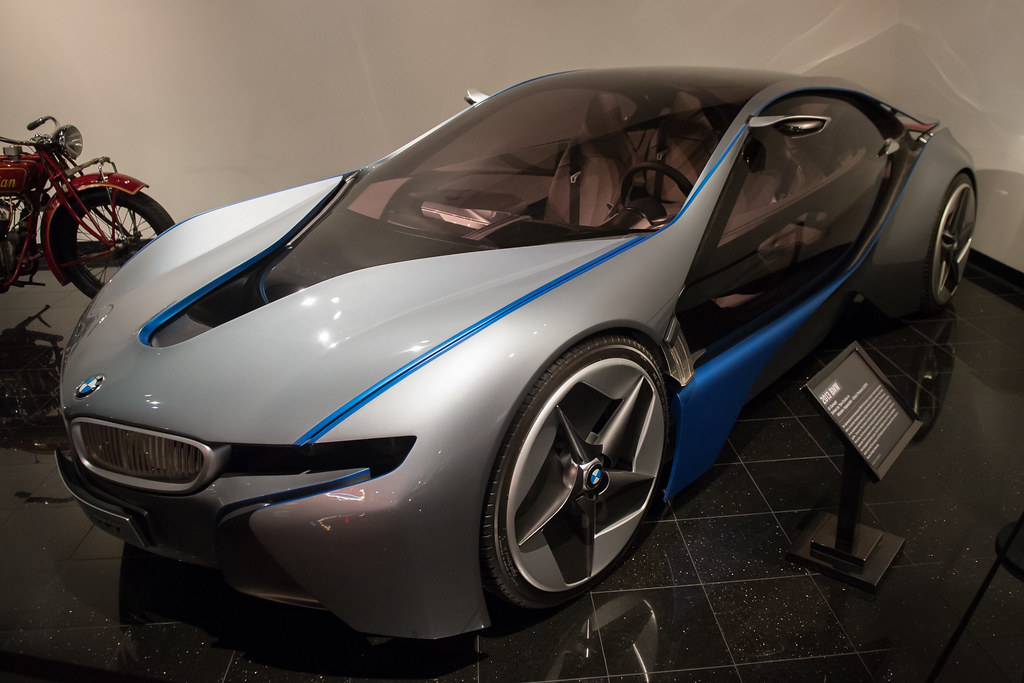
5. **BMW i8**
The BMW i8 arrived with an audacious vision, heralded as the “sports car of the future.” It captivated audiences with its stunning, futuristic design and the promise of seamlessly blending cutting-edge hybrid technology with BMW’s renowned performance DNA. The i8 was positioned not just as a car, but as a statement—a glimpse into what high-performance sustainable motoring could look and feel like, backed by BMW’s engineering prowess.
However, for many performance enthusiasts, the reality of the i8 proved to be somewhat underwhelming. Its complex drivetrain, while technologically impressive, often left drivers feeling a disconnect from the raw, engaging experience expected of a true sports car. The combination of a relatively small three-cylinder engine with electric motors provided brisk acceleration, but the overall sensation lacked the visceral thrill and responsiveness often found in its conventionally powered rivals.
Adding to the disappointment was its limited all-electric range, which left many enthusiasts underwhelmed. With a high price tag and underwhelming performance, the i8 never quite delivered the futuristic experience BMW promised. It was a technological marvel, certainly, but one that didn’t fully bridge the gap between innovation and the passionate driving experience expected from a BMW sports car.
Car Model Information: 2016 BMW i8
Name: BMW i8 (I12/I15)
Manufacturer: BMW
Production: April 2014 – June 2020 , (20,465 units)
Assembly: Saxony,Leipzig
Predecessor: BMW ActiveE
Successor: BMW 8 Series (G15),BMW M8
Class: Sports car
BodyStyle: coupé
Layout: Transverse engine,mid-engine,all-wheel-drive
Motor: 131 hp
Order: EPA
Abbr: on
Engine: turbocharged,I3 engine
Battery: kWh,lithium-ion battery
Transmission: Aisin,AWTF-80 SC
Drivetrain: Plug-in hybrid
Wheelbase: Convert
Length: Convert
Width: Convert
Height: Convert
Weight: Convert
Range: 500 km
ElectricRange: 37 km
Related: BMW i3
Designer: Vision EfficientDynamics
Doors: Butterfly doors
Powerout: 369 hp
ModelYears: 2014–2020
Categories: All articles containing potentially dated statements, All articles that are excessively detailed, All articles with style issues, Articles containing potentially dated statements from October 2016, Articles containing potentially dated statements from September 2016
Summary: The BMW i8 is a plug-in hybrid sports car developed by BMW. The i8 was part of BMW’s electrified fleet and was marketed under the BMW i sub-brand. The production version of the BMW i8 was unveiled at the 2013 Frankfurt Motor Show and was released in Germany in June 2014. Deliveries to retail customers in the U.S. began in August 2014. A roadster variant was launched in May 2018. Production ended in June 2020.
The 2015 BMW i8 accelerated from 0 to 100 km/h (62 mph) in 4.4 seconds and had an electronically limited top speed of 250 km/h (155 mph). The 2015 model year i8 had a 7.1-kWh lithium-ion battery pack that delivered an all-electric range of 37 km (23 mi) under the New European Driving Cycle. Under the U.S. EPA cycle, the range in EV mode was 24 km (15 mi). The battery capacity of both the BMW i8 Roadster and the i8 Coupe was increased to 11.6 kWh in 2018, allowing the NEDC electric range to rise to 55 km (34 mi) for the coupé and 53 km (33 mi) for the roadster.
The BMW i8 coupé had a fuel efficiency of 2.1 L/100 km (134.5 mpg‑imp; 112.0 mpg‑US) under the NEDC test with carbon emissions of 49 g/km. The EPA rated the i8 combined fuel economy at 76 MPGe (2.1 L gasoline-equivalent/100 km; 91 mpg-imp gasoline-equivalent) and 29 miles per gallon (6.7L/100 km) when running in pure gasoline mode.
Get more information about: BMW i8
Buying a high-performing used car >>>
Brand: BMW Model: i8
Price: $49,999 Mileage: 57,285 mi.
Read more about: 14 Luxury Cars Quietly Going Out of Style: An In-Depth Look at Automotive Evolution

6. **Jeep Cherokee (2014-2020)**
The Jeep Cherokee, specifically the generation produced from 2014 to 2020, was hyped as a capable off-road vehicle with everyday practicality. The redesign introduced a more contemporary aesthetic, departing from the classic rugged lines, aiming to appeal to a broader consumer base looking for a versatile family vehicle that could also handle adventurous excursions.
Despite this strong marketing push, the vehicle struggled significantly to live up to these expectations, particularly regarding its mechanical reliability. According to Consumer Reports, the Jeep Cherokee was notorious for transmission problems, particularly in the early years of this generation. These transmission woes ranged from erratic shifting to outright failures, severely impacting the driving experience and casting a shadow over the vehicle’s reputation.
The problems extended beyond just the transmission. Frequent recalls and mechanical issues made it one of the most disappointing SUVs in recent memory. These persistent reliability concerns transformed what was intended to be a capable and practical SUV into a source of frustration, undermining its appeal and eroding consumer confidence in its ability to deliver on both its off-road heritage and daily utility.
Car Model Information: 2020 Jeep Cherokee Latitude Plus
Name: Jeep Cherokee
Caption: Fifth generation (KL)
Manufacturer: Jeep
Aka: Jeep Liberty
ModelYears: unbulleted list
Class: unbulleted list
Layout: unbulleted list
Chassis: unbulleted list
Categories: All-wheel-drive vehicles, Anti-Indigenous racism in the United States, Articles with short description, Compact sport utility vehicles, Crossover sport utility vehicles
Summary: The Jeep Cherokee is a line of sport utility vehicles (SUV) manufactured and marketed by Jeep over six generations. Marketed initially as a variant of the Jeep Wagoneer (SJ), the Cherokee has evolved from a full-size station wagon (before the SUV description came into use) to one of the first compact SUVs and into its latest generation as a crossover SUV.
Named after the Cherokee tribe of Native Americans in the United States, Jeep has used the nameplate in some capacity since late 1973 when American Motors Corporation (AMC) introduced the 1974 model year line.
Production of the Cherokee ended in February 2023. The Cherokee nameplate has since been used by the Grand Cherokee and its extended version, the Grand Cherokee L.
Get more information about: Jeep Cherokee
Buying a high-performing used car >>>
Brand: Jeep Model: Cherokee
Price: $15,980 Mileage: 96,780 mi.
Read more about: Fuel for Regret: 14 Overhyped Vehicles That Drove Straight to Disappointment
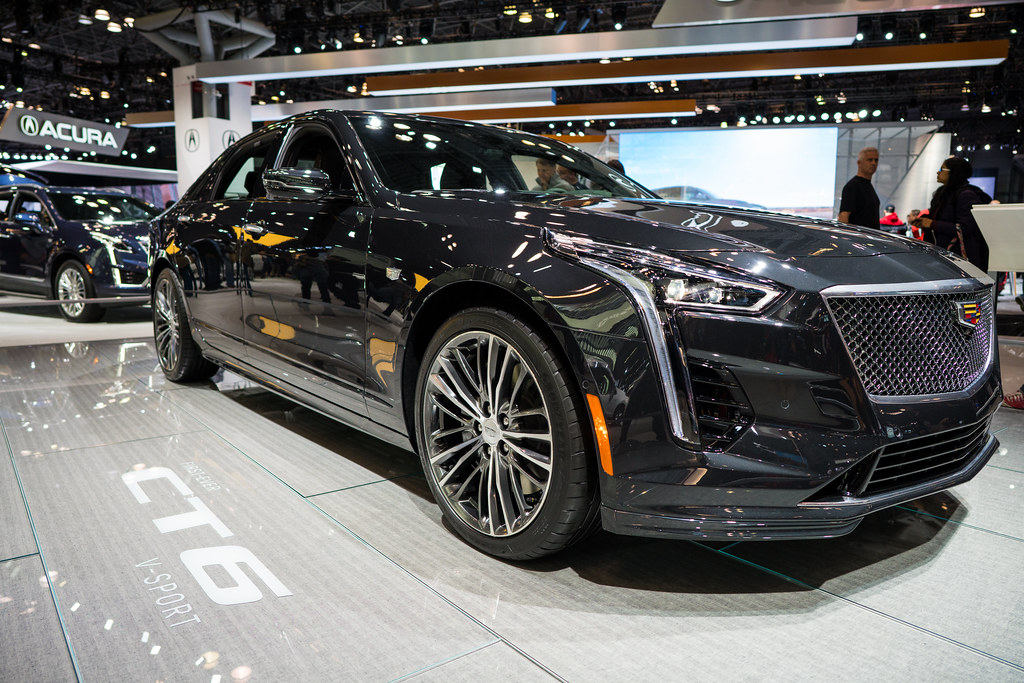
7. **Cadillac CT6**
The Cadillac CT6 was launched with a clear and ambitious objective: to bring American luxury back to the forefront and directly challenge the long-established European flagship sedans from brands like Mercedes-Benz, BMW, and Audi. Cadillac envisioned the CT6 as a sophisticated, technologically advanced vehicle that would showcase the best of American engineering and design, signaling a resurgence for the iconic brand in the premium sedan market.
However, despite its grand intentions, the CT6 struggled to compete with its European rivals. Critics frequently pointed to its underwhelming interior quality, noting that while well-appointed, it often fell short of the exquisite materials and meticulous craftsmanship found in its German rivals. This perceived lack of ultimate refinement in key areas diminished its overall premium appeal and made it difficult for the CT6 to justify its position at the top tier of the luxury segment.
Compounding these interior criticisms was its lackluster performance for a flagship sedan. While capable, the powertrain options often failed to deliver the exhilarating or commanding driving experience that buyers expected from a top-tier luxury sport sedan. Even with advanced features like Super Cruise, the CT6 failed to capture the market as intended. Ultimately, the CT6 struggled to capture the market’s imagination, proving that innovation alone isn’t always enough to overturn deeply entrenched brand loyalties and expectations in the fiercely competitive luxury segment.
Car Model Information: 2018 Cadillac CT6 3.0L Twin Turbo Platinum
Name: Cadillac CT6
Manufacturer: General Motors
Production: January 2016–present
ModelYears: 2016–2020 (North America),2016–present (China)
Class: Full-size,luxury car
BodyStyle: Sedan (car)
Sp: us
Successor: Cadillac Celestiq
Categories: 2010s cars, 2020s cars, All-wheel-drive vehicles, Articles with Chinese-language sources (zh), Articles with short description
Summary: The Cadillac CT6 (short for Cadillac Touring 6) is a full-size luxury car manufactured by Cadillac between 2016 and 2020 over two generations. The first generation CT6 was introduced at the 2015 New York International Auto Show and went on sale in the U.S. in March 2016. It is the first car to adopt the brand’s revised naming strategy, as well as the first rear-wheel drive full-size Cadillac sedan since the Fleetwood was discontinued in 1996.
In 2020, the CT6 was discontinued in the United States, to be replaced by the forthcoming Cadillac Celestiq liftback sedan.
Get more information about: Cadillac CT6
Buying a high-performing used car >>>
Brand: Cadillac Model: CT6
Price: Not Priced Mileage: 59,119 mi.
Read more about: 14 Luxury Cars Quietly Going Out of Style: An In-Depth Look at Automotive Evolution

8. **Mercedes-Benz EQC**
The Mercedes-Benz EQC was positioned as a formidable contender in the luxury electric SUV segment, representing the brand’s ambitious attempt to electrify its core offerings. Expectations were high for a vehicle that would seamlessly integrate Mercedes’ opulent design with powerful electric performance, challenging established players and setting new benchmarks in the premium EV market. It carried the immense weight of the brand’s century-long reputation for engineering excellence and sophisticated luxury.
However, the EQC quickly struggled to carve out a distinct identity. Its performance metrics, particularly in terms of all-electric range and acceleration, proved somewhat underwhelming when directly compared to primary rivals like the Tesla Model X. While capable for everyday commutes, it conspicuously lacked the compelling statistics and the “wow” factor often expected in the high-performance EV sector, failing to offer the significant leap forward discerning luxury consumers anticipated from a Mercedes-Benz product.
This comparative weakness meant the EQC did not generate the widespread impact Mercedes-Benz envisioned. Sales figures remained consistently lackluster, indicating a noticeable lack of strong consumer demand. The clearest signal of its struggle was the significant delay of its launch in the crucial U.S. market, explicitly attributed to a lack of demand. This underscored how even a luxury powerhouse can misjudge market expectations in a rapidly evolving segment.
Read more about: Avoid These Electric Cars Known for High Battery Replacement Costs
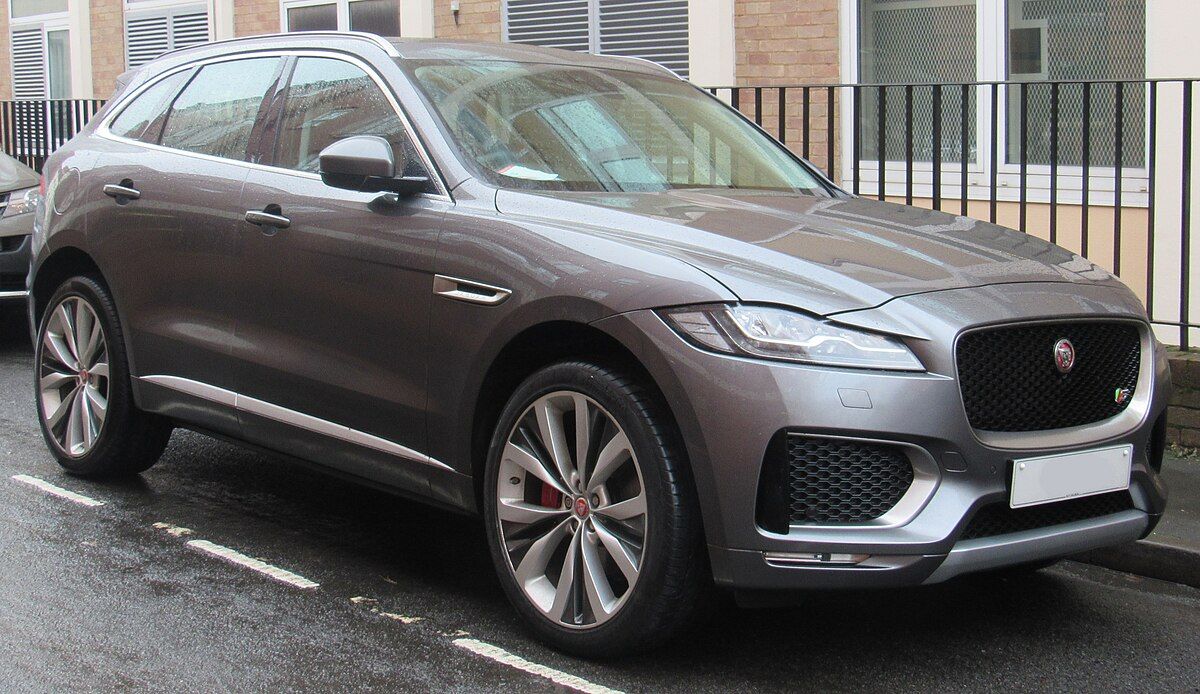
9. **Jaguar E-Pace**
Jaguar’s E-Pace entered the market with the strategic aim of capturing a significant slice of the rapidly expanding compact luxury SUV segment. It was marketed as a sporty and dynamic vehicle, engineered to infuse the practicality of an SUV with the spirited driving characteristics and luxurious appeal synonymous with the esteemed Jaguar brand. The expectation was that the E-Pace would offer a distinctively British alternative to the German-dominated segment, appealing to buyers seeking elegance and responsive performance in a city-friendly package.
Yet, the tangible reality of the E-Pace proved to be a notable departure from its enthusiastically advertised promise. Critics and owners alike found it to be neither genuinely sporty in its handling nor particularly luxurious in its execution, struggling to live up to the high standards of a Jaguar. The driving dynamics felt less engaging than anticipated, conspicuously failing to deliver the truly “sporty” feel pivotal to its initial marketing narrative and brand positioning.
Further compounding these criticisms regarding its performance and handling, were a series of practical issues frequently reported by owners. These concerns included persistent problems with the vehicle’s infotainment system and general concerns regarding build quality. In a market teeming with strong competitors like the BMW X1, the Jaguar E-Pace simply struggled profoundly to stand out. Despite Jaguar’s concerted efforts, the E-Pace ultimately couldn’t keep pace with the elevated expectations of its segment, highlighting the challenges of entering a saturated market without a truly distinctive or flawlessly executed offering.
Car Model Information: 2022 Jaguar E-PACE SE
Name: Jaguar E-Pace (X540)
Caption: E-Pace (D180 AWD trim, Germany)
Manufacturer: Jaguar Land Rover
ModelCode: X540
Production: 2017–2024
Assembly: ubl
Designer: Ian Callum
Class: Subcompact luxury crossover SUV
BodyStyle: Sport utility vehicle
Platform: Jaguar Land Rover car platforms#PTA
Related: ubl
Engine: ubl
Motor: ubl
Transmission: ubl
Layout: ubl
Drivetrain: Mild Hybrid
Battery: Kilowatt-hour,Lithium-ion battery
Wheelbase: cvt
Length: cvt
Width: cvt
Height: cvt
Sp: uk
Categories: 2020s cars, All articles with dead external links, All stub articles, Articles with dead external links from February 2023, Articles with permanently dead external links
Summary: The Jaguar E-Pace (X540) is a subcompact luxury crossover SUV (C-segment in Europe) produced by the British car manufacturer Jaguar Land Rover (JLR) under their Jaguar marque. It was officially revealed on 13 July 2017 and was the second production Jaguar SUV.
The car is built in Graz, Austria, by Magna Steyr and from 2018 by Chery Jaguar Land Rover, JLR’s joint venture with partner Chery, in Changshu, China.
Get more information about: Jaguar E-Pace
Buying a high-performing used car >>>
Brand: Jaguar Model: E-Pace
Price: $29,000 Mileage: 7,365 mi.
Read more about: Vehicles That Spell Trouble: 15 Cars with Notoriously Costly Repair Histories for Consumers
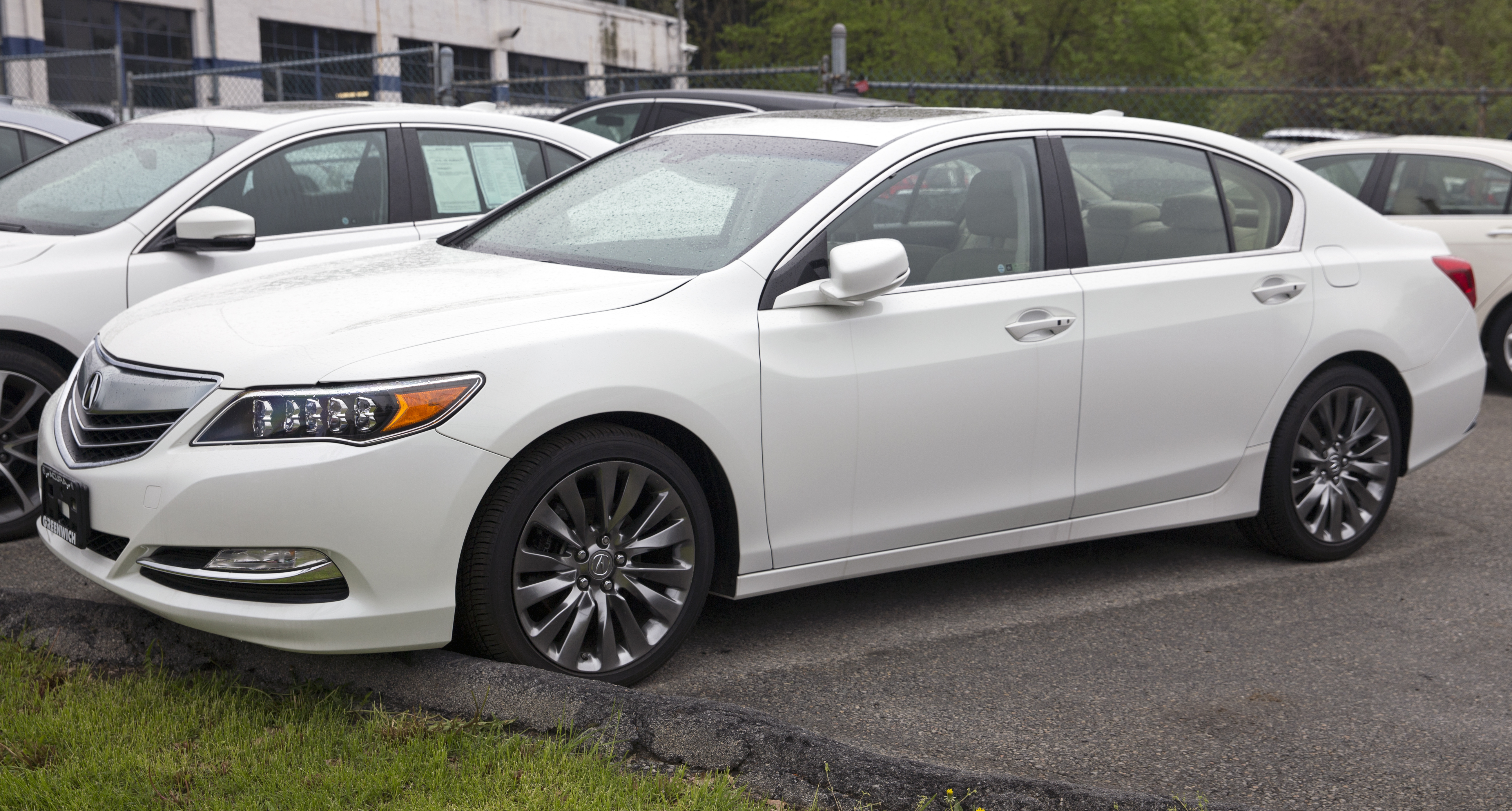
10. **Acura RLX**
The Acura RLX was introduced with the clear and ambitious intention of reestablishing Acura’s significant foothold in the fiercely competitive luxury sedan market. It was meticulously designed to showcase Acura’s profound technological prowess and its refined, sophisticated approach to luxury, aiming specifically to attract discerning buyers who appreciated an understated elegance meticulously combined with innovative, albeit subtle, features. The brand harbored high hopes that the RLX would serve effectively as a flagship model, thereby elevating Acura’s overall brand image and strategically positioning it back in contention with the dominant, long-established European luxury marques.
However, despite these undoubtedly lofty ambitions and considerable investment, the RLX regrettably never truly resonated effectively with its intended target audience, consistently struggling to gain any significant traction among critical luxury sedan buyers. Its sales figures, a stark indicator of market acceptance, consistently remained poor throughout its production run, reflecting a broader disinterest in the model from the public. A significant and recurrent factor contributing to its decidedly lukewarm reception was its design aesthetic, which many critics and consumers perceived as dated even at the time of its initial launch, conspicuously failing to convey the modern sophistication and forward-thinking appeal expected from a premium vehicle in its class.
Furthermore, the technology integrated within the RLX, while fundamentally functional and well-engineered, often felt distinctly lackluster when directly stacked against the more advanced, feature-rich, and intuitively user-friendly systems readily offered by its more agile and innovative rivals. This critical combination of an uninspired exterior design, an interior that lacked cutting-edge appeal, and an overall suite of unremarkable technology features, coupled with its pervasive failure to truly distinguish itself in a crowded segment, ultimately and inevitably sealed its fate in the marketplace.
Car Model Information: 2018 Acura RLX Technology Package
Name: Acura RLX
Manufacturer: Honda
Aka: Honda Legend
Production: December 2012 – June 2020
ModelYears: 2014–2020
Assembly: Sayama, Saitama
Designer: Hideaki Uchino (2009)
Class: Executive car
BodyStyle: Sedan (automobile)
Layout: Front-engine, front-wheel-drive layout
Engine: Earth Dreams Technology,Honda J engine#J35Y,V6 engine
Motor: 3x Permanent-magnet synchronous AC motors (1x 47 hp Front + 2x 36 hp Rears: Sport Hybrid SH-AWD)
Transmission: Automatic transmission
Battery: Lithium-Ion battery
Wheelbase: 2850 mm
Abbr: on (Legend)
Length: 4982 mm
Width: 1890 mm
Height: 1465 mm
Weight: convert,convert
Predecessor: Acura RL
ModelCode: KC1/2
Categories: 2020s cars, Acura vehicles, All-wheel-drive vehicles, All Wikipedia articles written in American English, All articles needing additional references
Summary: The Acura RLX is a mid-size luxury car manufactured by Honda and produced under their Acura division since 2012 for the 2014 model year, replacing the RL. The RLX was discontinued in 2020 after the 2020 model year
Get more information about: Acura RLX
Buying a high-performing used car >>>
Brand: Acura Model: RLX
Price: $21,164 Mileage: 66,873 mi.
Read more about: The True Cost of Elegance: 10 Luxury Cars That Deliver Joy or Drain Your Wallet on Maintenance

11. **Ford EcoSport**
Ford strategically introduced the EcoSport into the North American market with the explicit intent of aggressively capitalizing on the burgeoning and highly profitable demand for compact SUVs. It was pitched to consumers as a versatile, unequivocally urban-friendly vehicle, meticulously designed to offer a practical and economical transportation solution tailored for city dwellers and young families eagerly seeking a nimble, elevated driving experience without the bulk of larger SUVs. The extensive marketing campaigns surrounding the EcoSport heavily emphasized its compact dimensions and inherent utility, vigorously suggesting it was an ideal fit for effortlessly navigating congested urban streets and effortlessly squeezing into tight parking spaces.
However, the EcoSport unfortunately quickly faltered in consistently living up to its grandly promised versatility and broad market appeal. Both automotive critics and a significant number of owners frequently and vocally pointed to its rather poor driving dynamics, noting a pervasive lack of refinement in its ride quality and an overall unengaging driving experience that significantly detracted from the vehicle’s perceived value and overall user satisfaction. The interior, despite its categorization as a compact SUV, was often unsparingly described as cramped and surprisingly small, particularly for rear passengers, thereby substantially diminishing its practical utility for daily use, longer journeys, or family outings.
Adding significantly to its accumulating woes, the EcoSport was consistently equipped with technology features that felt noticeably outdated and surprisingly basic when directly compared to the more modern, sophisticated, and user-friendly systems readily offered by many of its direct competitors. This deficiency in contemporary tech further eroded its overall value proposition in a market where connectivity and advanced features are increasingly crucial selling points for consumers. The cumulative effect of these shortcomings was a torrent of negative reviews, notably including Car and Driver’s strikingly blunt assessment that famously branded it as “cheap and uncomfortable.” In a fiercely competitive market segment where new, innovative, and highly appealing compact SUVs were arriving with relentless regularity, the Ford EcoSport simply did not fare well, illustrating that merely entering a popular category isn’t sufficient for success.
Car Model Information: 2018 Ford EcoSport SE
Name: Ford EcoSport
Manufacturer: Ford Motor Company
Production: 2003–2022
ModelYears: 2014–2022 (Europe) and 2018–2022 (North America)
Class: Subcompact crossover SUV
BodyStyle: Sport utility vehicle
Layout: Front-engine, front-wheel-drive layout
Categories: 2010s cars, 2020s cars, All-wheel-drive vehicles, All articles with bare URLs for citations, All articles with unsourced statements
Summary: The Ford EcoSport ( EK-oh-sport) is a subcompact crossover SUV (B-segment) manufactured by Ford between 2003 and 2022.
The first-generation model was developed and built in Brazil by Ford Brazil since 2003, at the Camaçari plant. The second-generation model was launched in 2012, which was assembled in factories in India, Thailand, Russia and Romania. The vehicle entered the European market in 2014 and the North American market in 2018. It was sold in both until its discontinuation after the 2022 model year. Throughout its existence, the EcoSport shared its platform with the Fiesta.
Get more information about: Ford EcoSport
Buying a high-performing used car >>>
Brand: Ford Model: EcoSport
Price: $5,988 Mileage: 156,423 mi.
Read more about: Buyer Beware: 12 SUV Models Plagued by Expensive, Post-Warranty Repairs
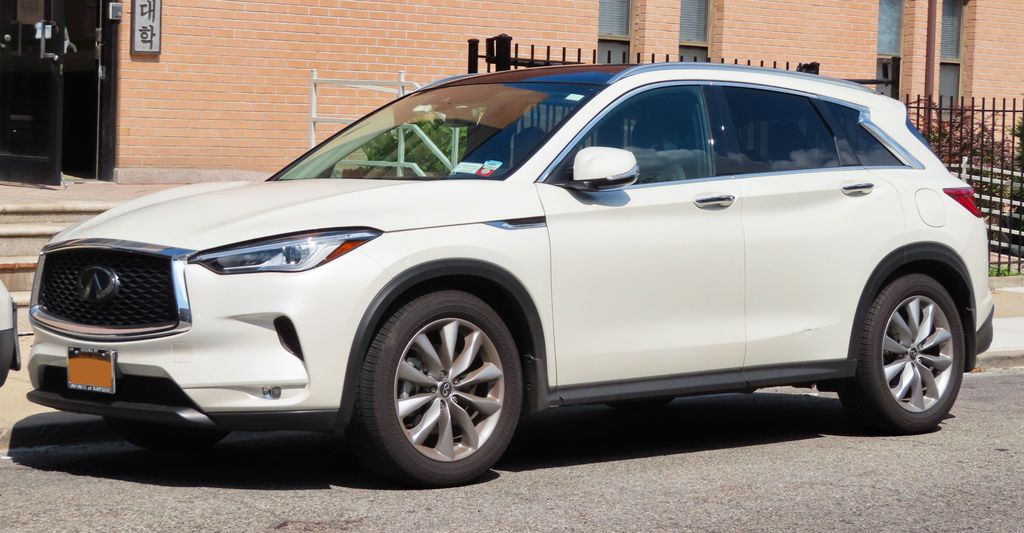
12. **Infiniti QX50**
The Infiniti QX50 made its highly anticipated debut with a monumental technological highlight: its revolutionary variable compression engine, known as VC-Turbo. This innovative powertrain was aggressively hyped as an unprecedented game-changer in the automotive industry, promising an unparalleled combination of robust performance and truly exceptional fuel efficiency within the demanding luxury crossover segment. Infiniti meticulously positioned the QX50 as a highly intelligent, technologically sophisticated choice for discerning buyers who deeply valued cutting-edge engineering and a refined, yet dynamic, driving experience that uncompromisingly prioritized practicality without sacrificing efficiency.
Despite the undeniable advancements embodied in its state-of-the-art engine technology, the real-world driving experience delivered by the QX50 regrettably proved to be largely underwhelming for a significant number of consumers and automotive journalists alike. The much-touted synergy of powerful performance and impressive efficiency did not fully materialize in a manner that consistently impressed discerning luxury buyers. Its performance, while objectively adequate, often felt less refined and exhilarating than expected, and, critically, its observed fuel efficiency gains were frequently subpar compared to what the sophisticated engineering had led consumers to optimistically anticipate, thereby significantly diluting the impact and perceived value of its key technological selling point.
Further, persistent criticisms were consistently leveled at the QX50’s interior, which, despite its inherent luxurious appointments and use of quality materials, was often widely perceived as lacking the meticulous craftsmanship, bespoke detailing, and intuitive, user-centric design routinely found in the class-leading rivals. The overall driving experience was frequently, and somewhat disappointingly, described as unrefined and detached, falling considerably short of the polished, engaging, and premium feel that is inherently expected from a luxury crossover residing in its competitive price bracket. Consequently, the Infiniti QX50 struggled considerably to stand out and ultimately fell behind its more compelling competitors, underscoring that innovative technology alone cannot guarantee market success if the overall product package fails to deliver a superior ownership experience.
Car Model Information: 2020 INFINITI QX50 Luxe
Name: Infiniti QX50
Caption: Infiniti QX50 (J55)
Manufacturer: Nissan
Aka: unbulleted list
Production: unbulleted list
Class: Compact executive car,Crossover (automobile)
BodyStyle: SUV
Layout: unbulleted list
Categories: 2020s cars, All-wheel-drive vehicles, All articles with unsourced statements, Articles with short description, Articles with unsourced statements from September 2025
Summary: The Infiniti QX50, formerly the Infiniti EX until 2013, is a crossover SUV marketed by Infiniti, Nissan’s luxury division between 2007 and 2025. It was produced over two generations: one generation under both EX and QX50 nameplates, and the second generation under the QX50 nameplate. The first generation model was also marketed as the Nissan Skyline Crossover in Japan.
The first generation QX50 was a minor model update of the EX with its nameplate changed to QX50 to align with the marque’s new Q and QX nomenclature introduced for model year 2013 (China) and model year 2015 (United States). The second-generation QX50 entered production in November 2017 as a 2019 model.
Get more information about: Infiniti QX50
Buying a high-performing used car >>>
Brand: Infiniti Model: QX50
Price: $21,950 Mileage: 69,041 mi.
Read more about: Unpacking Autonomy: A Consumer’s Guide to Leading Self-Driving Systems
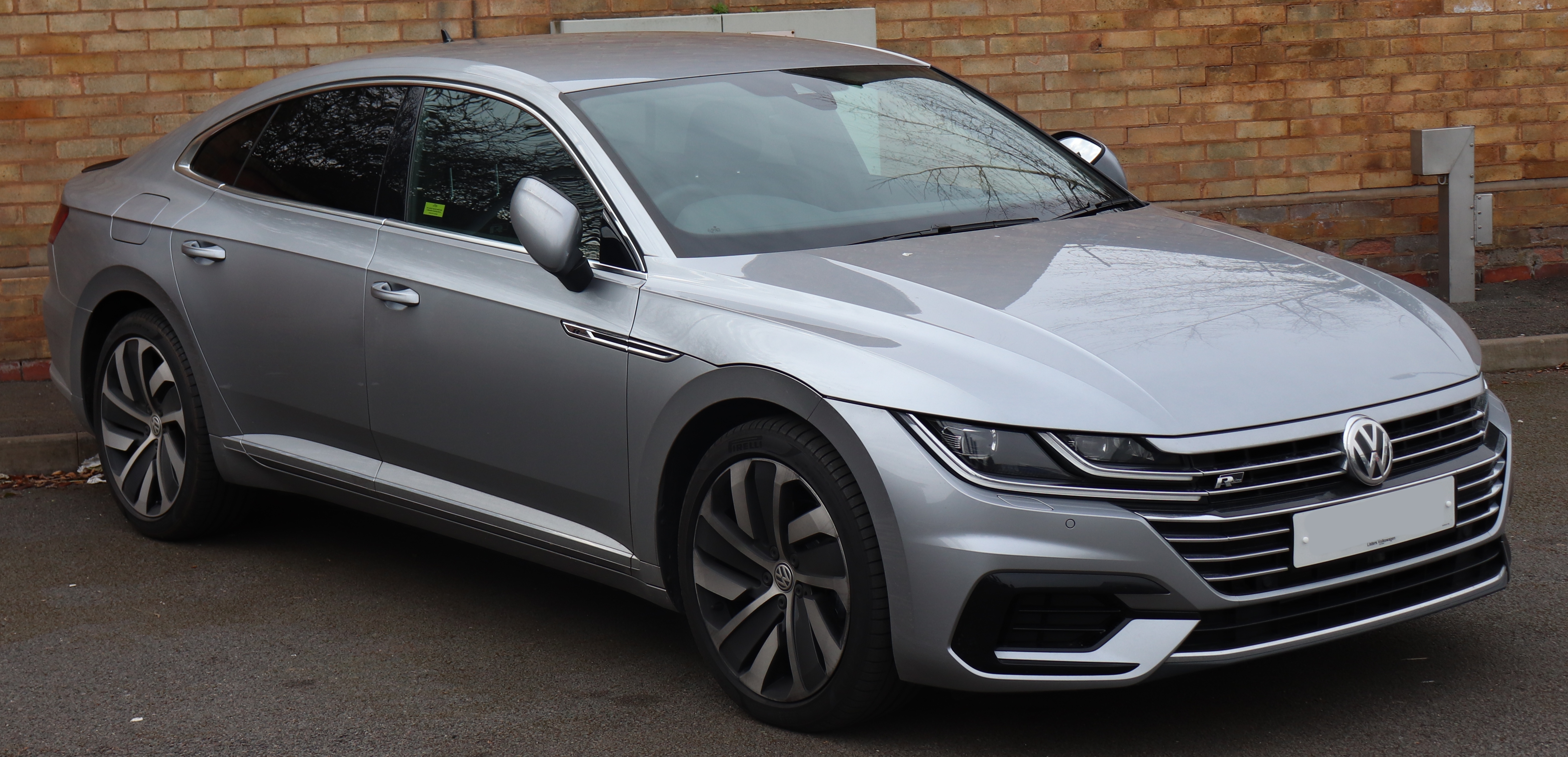
13. **Volkswagen Arteon**
Volkswagen introduced the Arteon into the market with considerable aspirations, aiming to carve out a distinctive niche as a stylish, premium, and aesthetically compelling alternative to conventional luxury sedans. It was meticulously presented as a sophisticated four-door coupe, deliberately designed to seamlessly blend elegant, avant-garde design language with Volkswagen’s long-standing reputation for robust German engineering and inherent practicality. The Arteon specifically sought to offer a distinctive visual aesthetic and an upscale interior ambiance that would effectively appeal to discerning buyers actively looking for something beyond the traditional sedan offerings, yet without necessarily stepping into the significantly higher price brackets of true, established luxury brands.
However, the Arteon regrettably struggled profoundly to establish a clear and memorable identity within the intensely crowded and competitive automotive market, consequently leaving it in a perpetual state of market limbo. While its exterior styling was undeniably striking and drew considerable attention, its core performance characteristics were often described as merely average and uninspiring, conspicuously failing to deliver the exhilarating or truly dynamic driving experience that its sleek and sporty exterior might powerfully suggest. The powertrain options, though fundamentally competent and reliable, frequently felt underwhelming when directly compared to the more potent, engaging, and performance-oriented offerings from its numerous rivals, particularly given the Arteon’s premium market positioning.
The vehicle’s strategic pricing also presented a significant and persistent challenge in the marketplace; the Arteon carried a relatively high price tag for a vehicle bearing the Volkswagen badge, making it inherently difficult for a substantial number of consumers to rationally justify the cost. This challenge was compounded by the fact that more established luxury brands often offered arguably better-rounded, more feature-rich, and more prestigious overall packages for similar or even slightly higher price points, offering a clearer value proposition. This combination of an ambiguous market position, a perceived lack of truly distinctive performance, and a challenging price point meant the Arteon struggled to effectively differentiate itself. Despite its premium styling, sales remained disappointing, highlighting the difficulty of creating a new segment without a truly compelling value proposition.
Car Model Information: 2023 Volkswagen Arteon 2.0T SEL R-Line 4MOTION
Name: Volkswagen Arteon
Caption: Volkswagen Arteon 2.0 R-Line
ModelCode: 3H7
Aka: Volkswagen CC (China)
Manufacturer: Volkswagen
Production: 2017–2023 (Liftback),2020–2026 (Shooting Brake)
Assembly: Emden,Lower Saxony
Designer: Marc Lichte
Predecessor: Volkswagen CC
Successor: Volkswagen ID.7
Class: Large family car
BodyStyle: liftback
Platform: Volkswagen Group MQB
Layout: Front-engine, front-wheel-drive layout,Front-engine, four-wheel-drive layout
Engine: ubl
Motor: Synchronous motor#Permanent-magnet
Transmission: Direct-shift gearbox
Drivetrain: PHEV
Wheelbase: cvt
Length: cvt
Width: cvt
Height: cvt
Related: Volkswagen Passat (B8),Škoda Superb#B8
ModelYears: 2019–2023 (North America)
Categories: 2020s cars, All-wheel-drive vehicles, Articles with short description, Cars introduced in 2017, Cars of China
Summary: The Volkswagen Arteon is a car manufactured by German car manufacturer Volkswagen. Described as a large family car or a mid-size car, it is available in five-door liftback or estate body styles. The Arteon was unveiled on 6 March 2017, at the Geneva Motor Show, and at the Chicago Auto Show for the North American market. It is a direct successor to the CC; however, Volkswagen announced that the Arteon is positioned to be more upmarket than the CC. The vehicle is based on the MQB platform.
Production of the saloon was discontinued in 2023. The wagon is to be continued until 2026.
Get more information about: Volkswagen Arteon
Buying a high-performing used car >>>
Brand: Volkswagen Model: Arteon
Price: $33,995 Mileage: 34,712 mi.
Read more about: Beyond the Bulk: 10 Cars That Redefine Pedestrian Safety – Why Compacts Are Outperforming Larger Models

14. **Tesla Model 3 (Early Models)**
The Tesla Model 3 arrived as perhaps the most intensely anticipated electric vehicle in recent memory, promising to democratize Tesla’s groundbreaking technology, advanced performance, and distinctive design by bringing them to a broad mass market at a significantly more accessible price point. The initial excitement was absolutely immense, with hundreds of thousands of pre-orders flooding in globally for a car that was widely seen as the definitive symbol of the future of personal transportation. It was poised to be the electric vehicle that would finally make electric driving a truly mainstream reality, thereby cementing Tesla’s leadership and visionary status in the rapidly evolving automotive industry.
Yet, the highly publicized rollout of early Model 3 units was, regrettably, not without its significant and widely reported challenges. These issues were largely centered around formidable production hurdles and pervasive, often inconsistent, build quality problems. Reports from various reputable sources, including J.D. Power, indicated that early owners frequently encountered a spectrum of manufacturing deficiencies, ranging from inconsistent paint application and noticeable panel gaps to misaligned trim pieces, alongside various software glitches within the vehicle’s sophisticated, screen-centric infotainment system. These manufacturing inconsistencies consistently detracted from the premium ownership experience that buyers expected from a Tesla and starkly highlighted the immense difficulties inherent in rapidly scaling production of a new, technologically complex, and highly demanded vehicle.
These early quality control setbacks and production bottlenecks inevitably dampened some of the initial, almost frenetic, hype surrounding the Model 3’s launch, leading to palpable frustration among early adopters who had placed significant trust and investment in the brand. While Tesla has, without question, demonstrably improved its production processes, streamlined its manufacturing operations, and refined its quality control protocols considerably over time, ultimately allowing the Model 3 to evolve into a dominant and highly successful force in the global EV market, these early struggles serve as a crucial and insightful reminder. They powerfully underscore that even the most revolutionary vehicles, backed by immense public anticipation, can face significant and often painful growing pains during their initial market introduction, vividly demonstrating how early challenges in execution can temporarily, but significantly, cloud the immense promise of truly groundbreaking innovation.
The journey from conceptual blueprint to market reality in the fiercely competitive automotive world is often fraught with unforeseen challenges and complex hurdles. As our comprehensive analysis has vividly illustrated across these 14 examples, even vehicles backed by the most prestigious brands, featuring ambitious technological innovations, or boasting compelling design narratives can regrettably fall significantly short of their initial, sky-high expectations. This phenomenon leaves a discernibly negative trail of disappointed owners, eroded brand trust, and unfulfilled market potential.
These prominent examples serve as an indispensable and critical reminder for both prospective consumers navigating the complex automotive market and for manufacturers striving to succeed within it. For consumers, the practical lesson is unequivocally clear: conducting thorough, independent research is paramount. While glowing pre-release reviews and extensive, persuasive marketing campaigns can undoubtedly paint an overly rosy picture, understanding real-world reliability data, consistent owner feedback, and long-term performance trends is absolutely essential before making a significant investment. Don’t simply buy into the hype; actively investigate and verify if the vehicle genuinely delivers on its core promises when confronted with real-world conditions.
Car Model Information: 2021 Subaru Forester Limited
Name: Tesla Model 3
Manufacturer: Tesla, Inc.
Production: 2017–present
Assembly: unbulleted list
Designer: Franz von Holzhausen
Class: Mid-size car
BodyStyle: Sedan (car)
Layout: unbulleted list
Related: Tesla Model Y
Motor: unbulleted list
Transmission: Single-speed fixed (9:1 ratio)
Battery: unbulleted list
ElectricRange: unbulleted list
Charging: unbulleted list
Wheelbase: cvt
Length: unbulleted list
Width: cvt
Height: unbulleted list
Weight: cvt
Caption: 2019 Tesla Model 3 Performance
Categories: 2020s cars, ANCAP large family cars, All-wheel-drive vehicles, All Wikipedia articles in need of updating, All Wikipedia articles written in American English
Summary: The Tesla Model 3 is a battery electric powered mid-size sedan with a fastback body style built by Tesla, Inc., introduced in 2017. The vehicle is marketed as being more affordable to more people than previous models made by Tesla. The Model 3 was the world’s top-selling plug-in electric car for three years, from 2018 to 2020, before the Tesla Model Y, a crossover SUV based on the Model 3 chassis, took the top spot. In June 2021, the Model 3 became the first electric car to pass global sales of 1 million.
A facelifted Model 3 with revamped interior and exterior styling was introduced in late 2023 for countries supplied by Gigafactory Shanghai and in early 2024 in North America and other countries supplied by the Tesla Fremont Factory.
Get more information about: Tesla Model 3
Buying a high-performing used car >>>
Brand: Tesla Model: Model 3
Price: $22,899 Mileage: 73,544 mi.
Read more about: 12 Cars That Broke Down Within the First Year: Owners Say They’d Never Buy Again
For automakers, these numerous cases highlight the exceptionally delicate and often precarious balance required between pushing the boundaries of innovation and ensuring flawless, consistent execution. Ambitious features, revolutionary powertrains, or bold design choices must be unequivocally backed by impeccable build quality, robust and unwavering reliability, and a keen, empathetic understanding of evolving consumer demands and preferences. Only those vehicles that consistently and reliably deliver on their myriad promises truly manage to earn lasting loyalty, sustained market success, and enduring positive reputations in the highly competitive automotive landscape.



